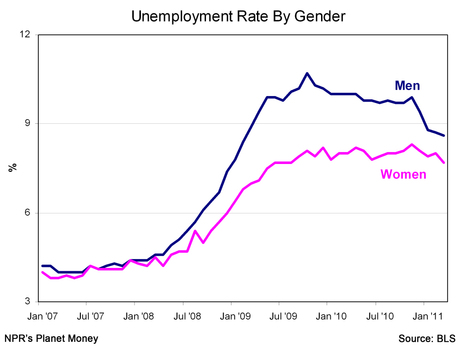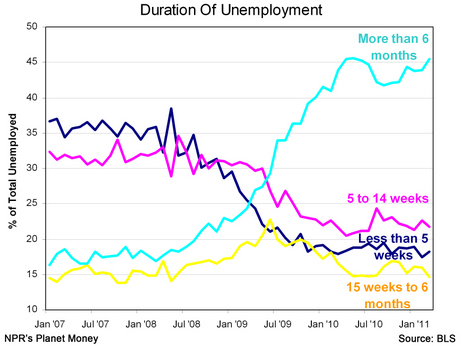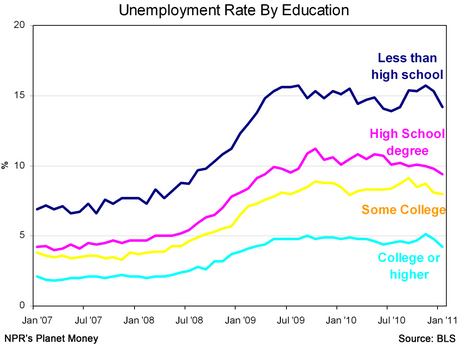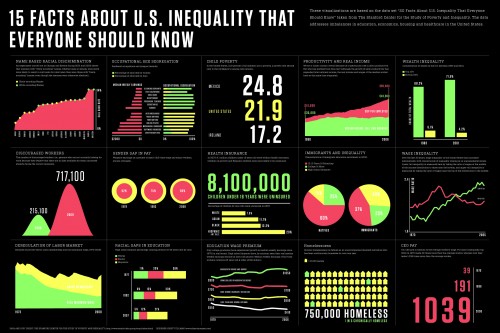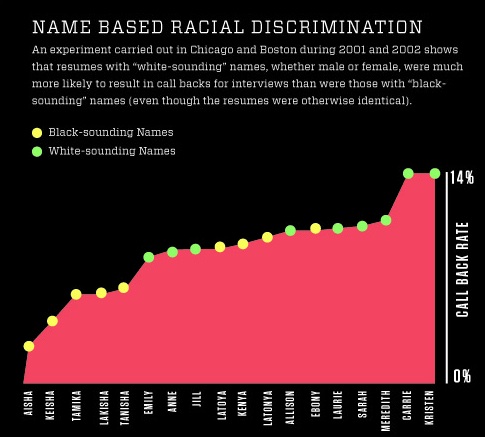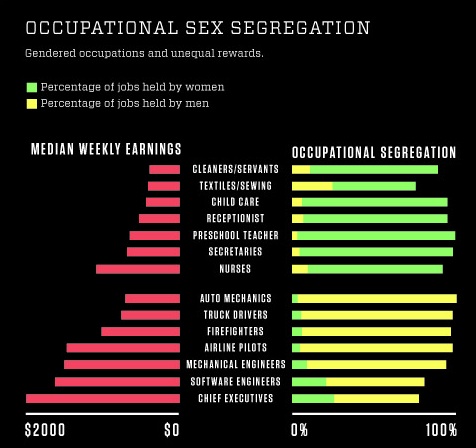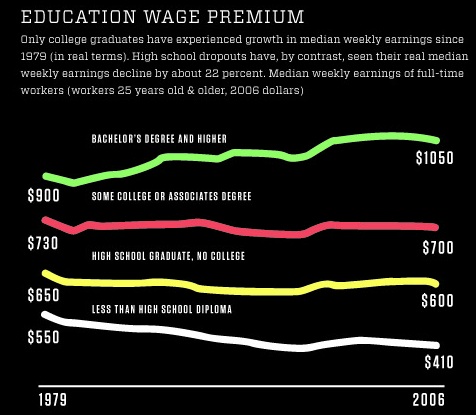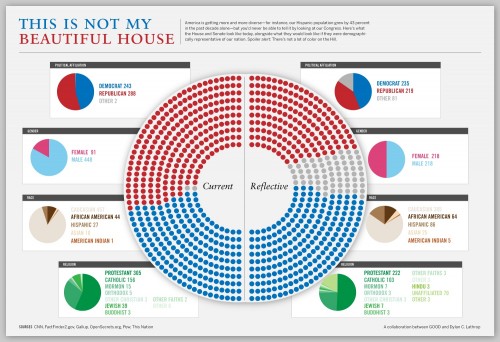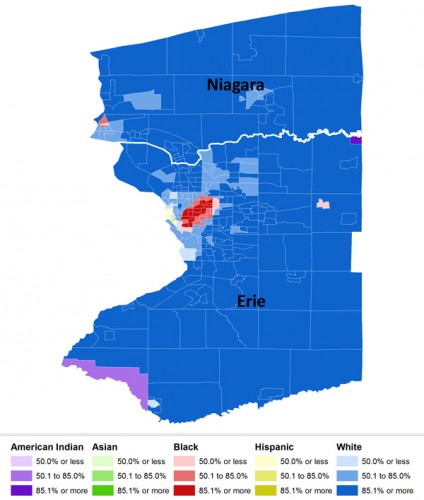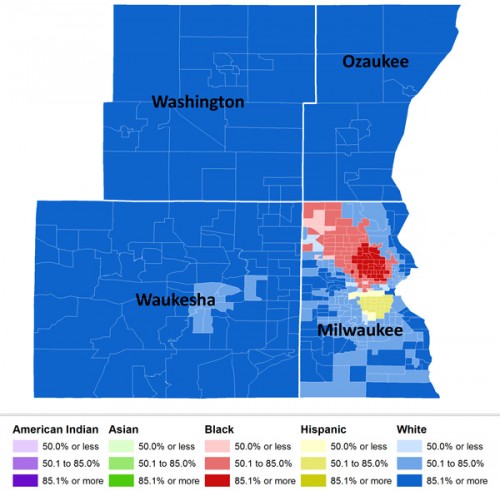Sangyoub Park, who teaches sociology at Washburn University, sent us an interesting article posted by NPR on various aspects of unemployment. The overall official unemployment rate of 8.8 percent (as of March 2011) hides a lot of variation. For instance, the unemployment rate during this recession has been consistently worse for men than for women:
Nearly half of people have been out of work for at least 6 months:
The unemployment rate for those with a college education is under 5%, while for those who didn’t graduate high school, it’s nearly 10 percentage points higher:
Check out the NPR story for more discussion and a few more graphs.
The NPR article doesn’t include data on race, but Sangyoub found some racial data at the BLS website. As of March 2011, the unemployment rate for Whites was 7.9%, while for Blacks it was 15.5%.

